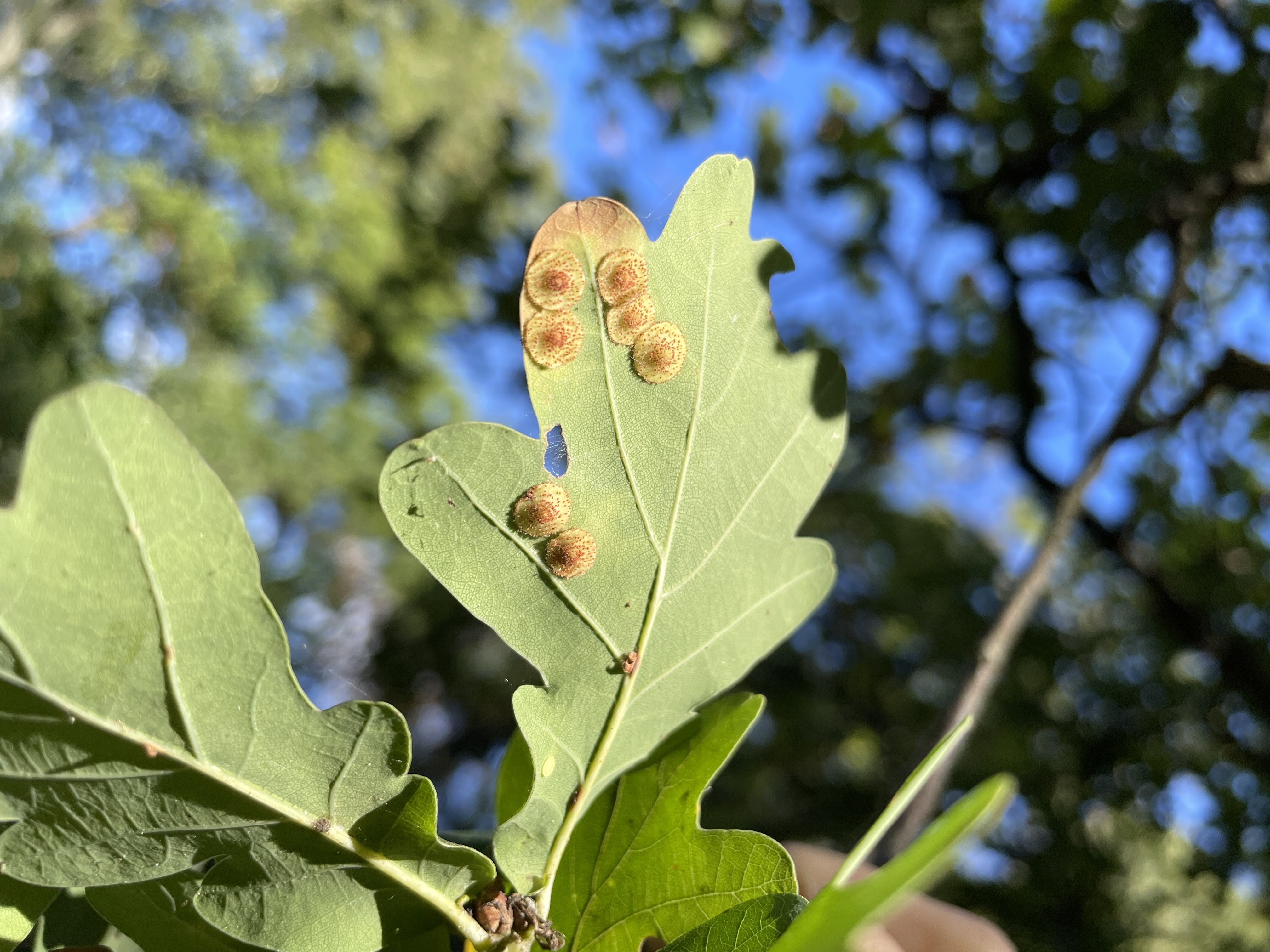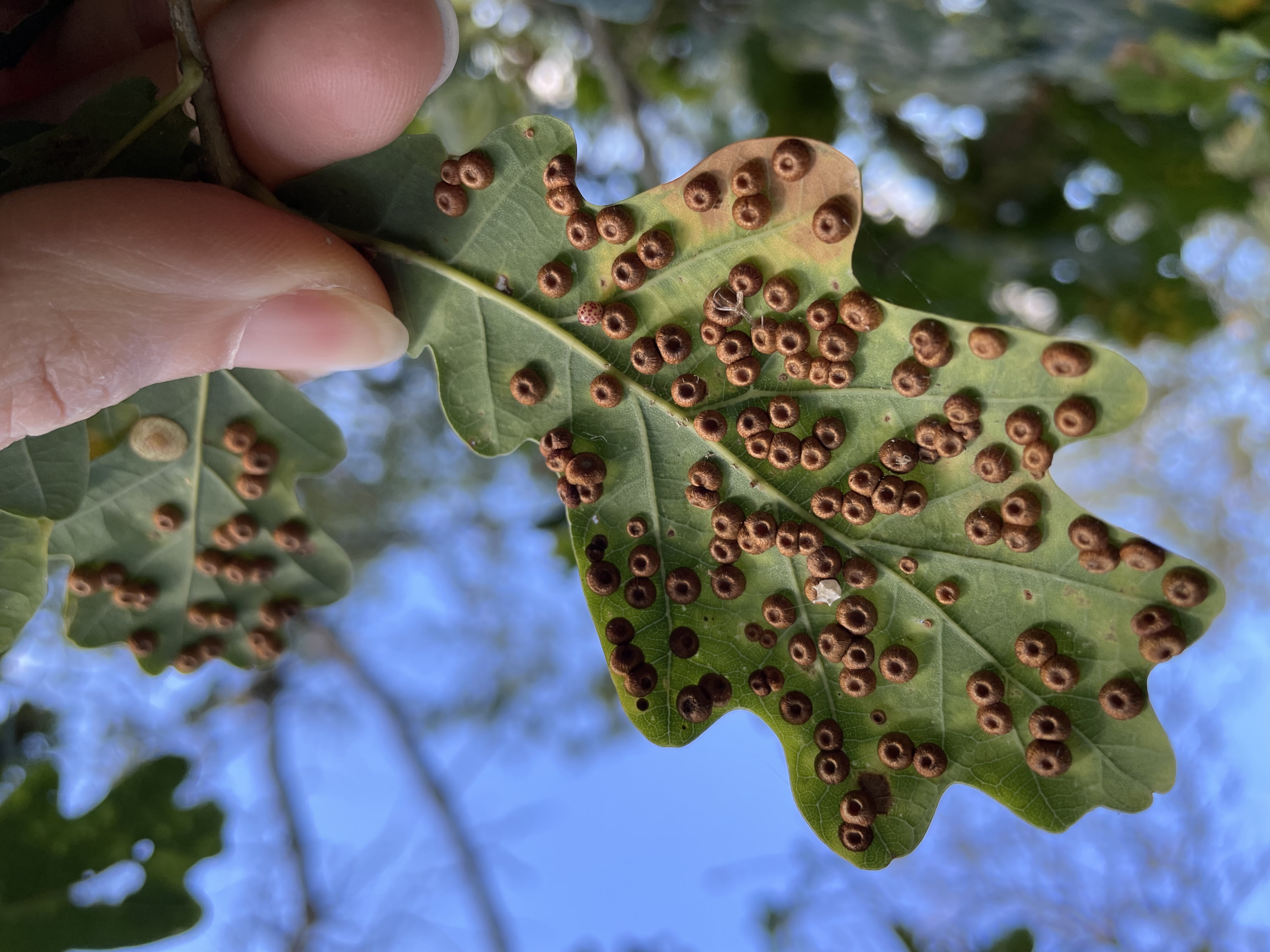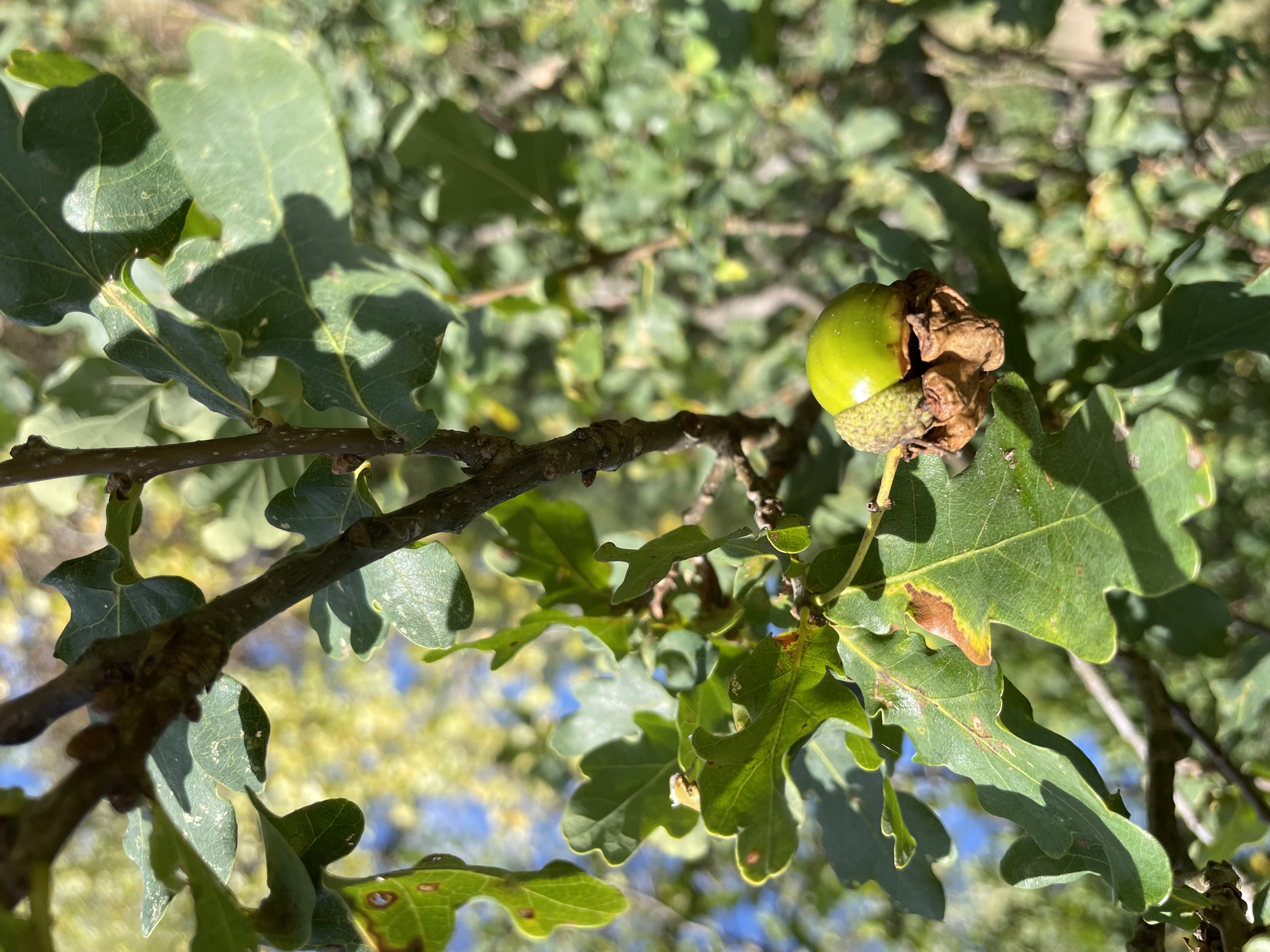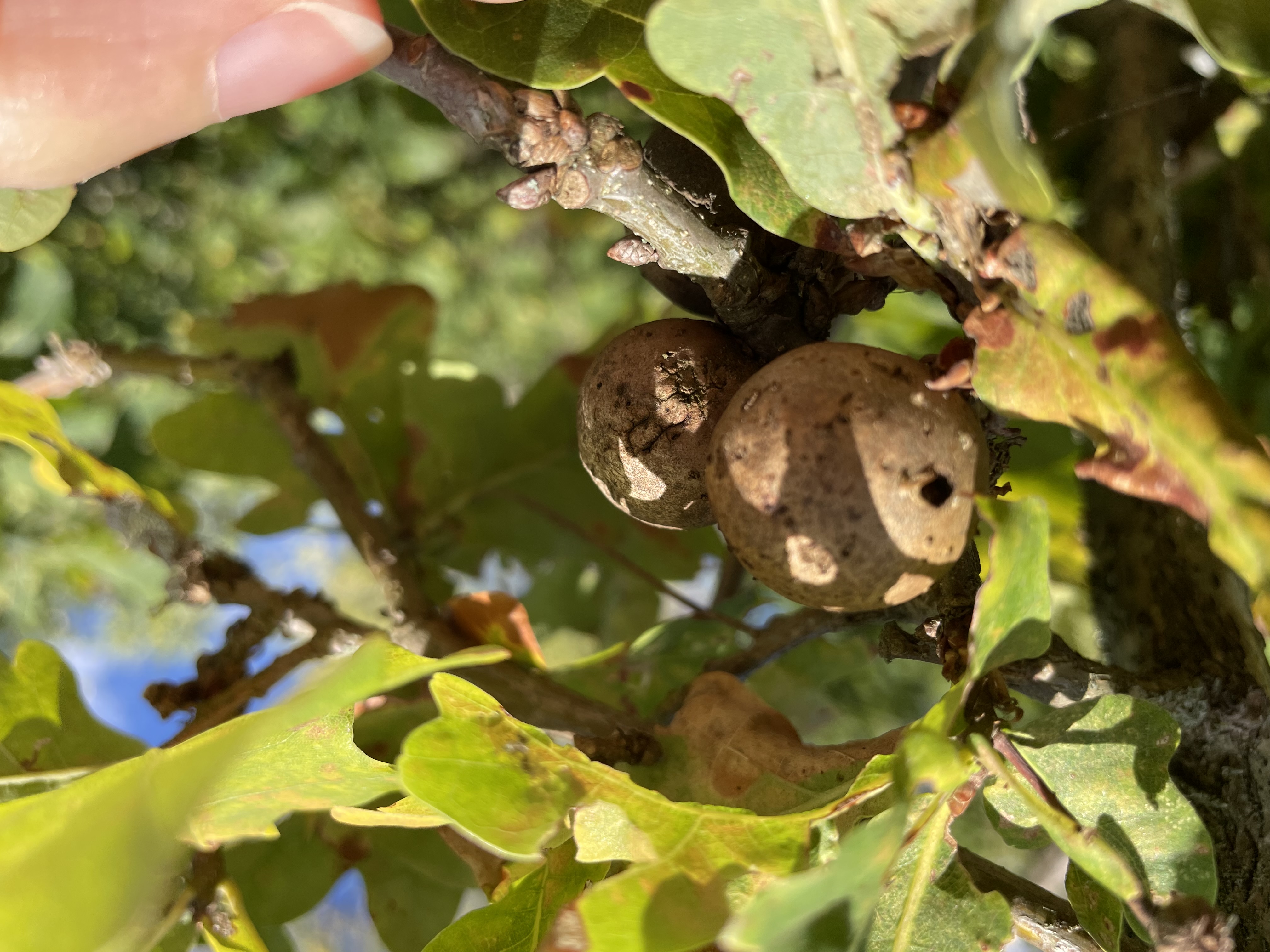Autumn is the perfect time to go hunting for plant galls, these odd-looking growths on trees and herbaceous plants. Oak trees are famous for supporting a great amount of species and gall-causing organisms are no exception: they are hosts to more than 50 different galls. Take a closer look at an oak tree on the Common, and there is a chance you’ll find some unusual looking things on it.
Plant galls are abnormal growths, usually caused by parasitic insects, mites or fungi that use them for food and protection. For example, one of the most common and easily identifiable gall, the oak marble gall is caused by the gall wasp Andricus kollari. This wasp lays its eggs in the buds of the oak, which swell into green globes about 2.5cm in diameter (the size of a marble), and turn brown and harden over the summer. A wasp larva is developing inside each gall, and as it becomes an adult by the end of the summer, it chews it way out of the gall, leaving a small exit hole. These galls contain a large amount of tannin, and historically were used for making black ink called iron gall ink. (See the header photo.)

While marble galls grow on the branches of oak trees, other, smaller galls can be found on their leaves. If you find several small, flat discs on the underside of oak leaves, those are probably common spangle galls, caused by another small parasitic wasp Neuroterus quercusbaccarum. These small, 6mm galls are greenish yellow initially, and turn reddish later. Eventually they fall off the leaf and get buried in the leaf litter under the tree that protects them from the cold. Each has a single larva inside, which continues developing over winter, emerging in spring. Although sometimes hundreds of these galls can occur on a single leaf, they don’t hurt or weaken the oak tree.

Sometimes occurring on the same leaf as the common spangle gall, sometimes just with its own kind and in huge numbers, another spangle gall that you can find on our oak trees is the silk button spangle gall. Resembling fabric-covered buttons, these small, 3mm galls are covered in golden hairs with a small depression in the middle. Each houses a single Neuroterus numismalis gall wasp larva which overwinters in the fallen gall.

If you find oddly shaped acorns, you’ve probably found some knopper galls, caused by the gall wasp Andricus quercuscalicis. These are hard, ridged structures that wholly or partially replace the acorn as they grow. Initially green, they grow to about 2cm in diameter and turn brown and woody, falling from the tree. Several of them can grow on one acorn. The larvae inside overwinter in the fallen knopper gall, and emerge in spring.
Found something interesting on the Common? Take a photo and share it with us!

